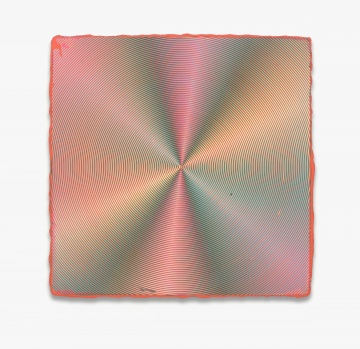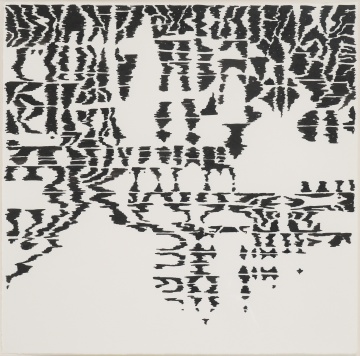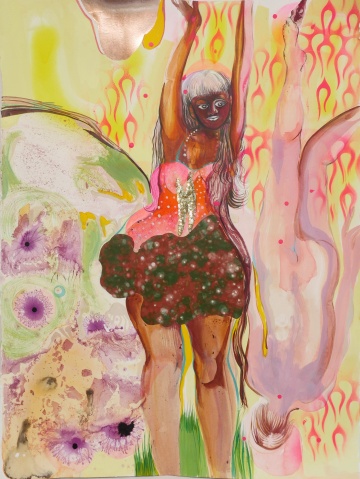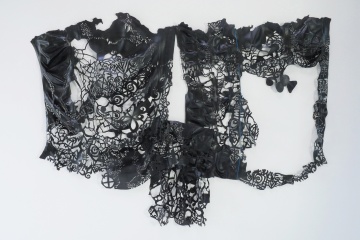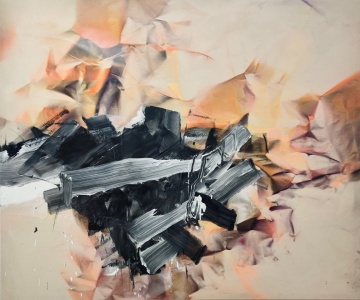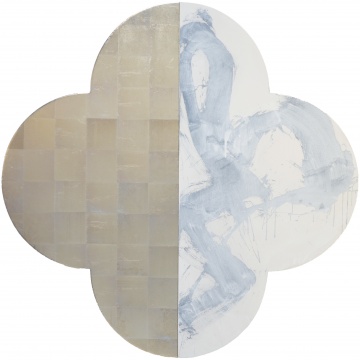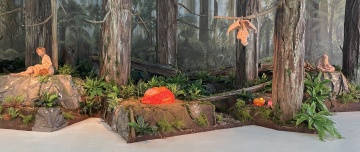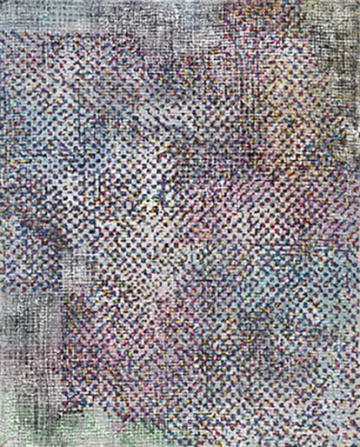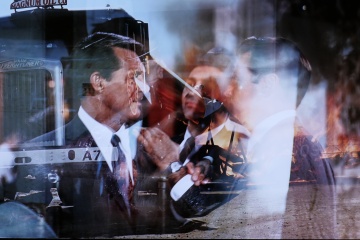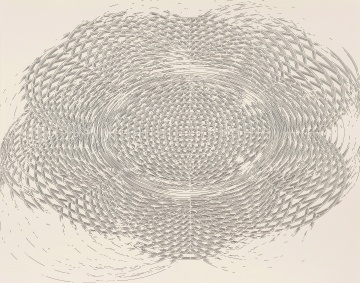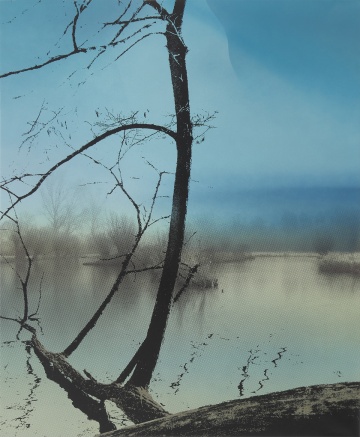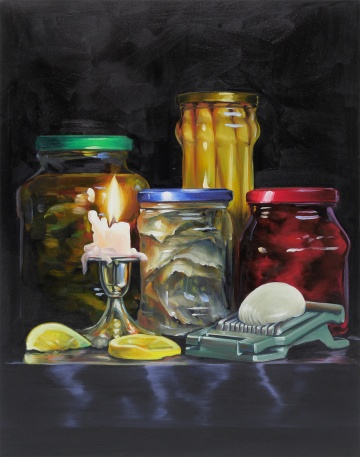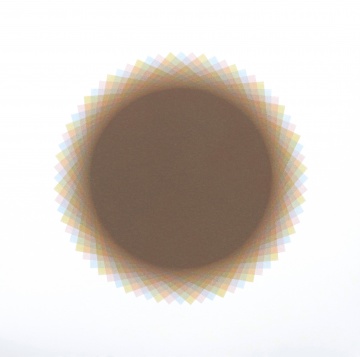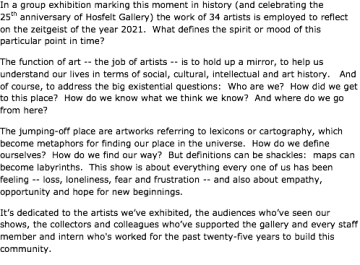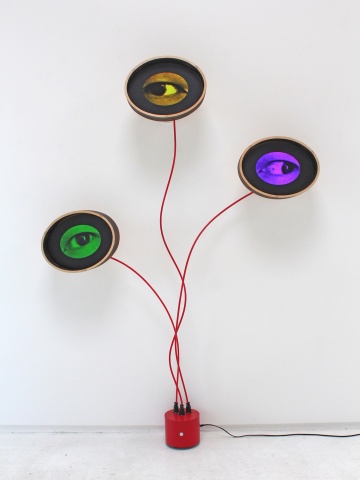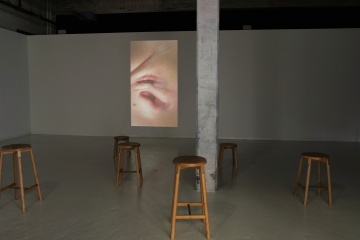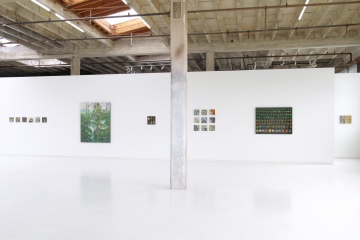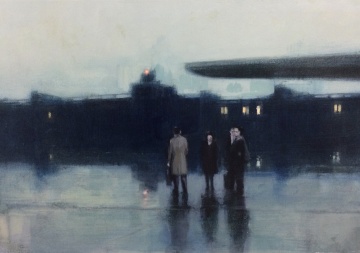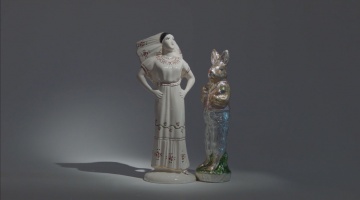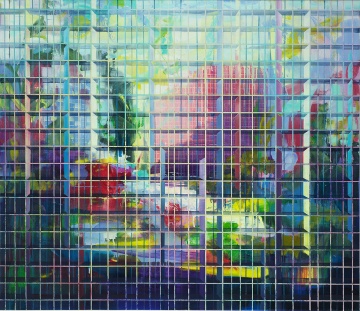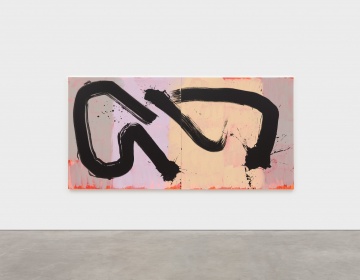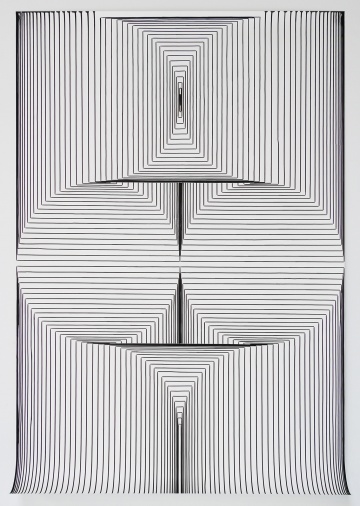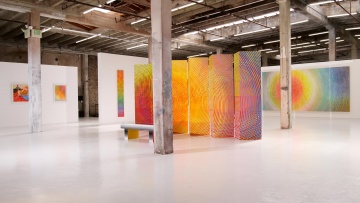Hosfelt Gallery
260 Utah Street
San Francisco, CA 94103
415 495 5454
San Francisco, CA 94103
415 495 5454
Hosfelt Gallery represents an international roster of artists whose work is grounded in a broad understanding of history — visual, cultural, political and social. Our program is built around artwork with a refined level of execution that offers new perspectives on critical discourses in contemporary art, culture, and politics.
Over the course of more than twenty years, Hosfelt Gallery has distinguished itself through the introduction of exceptional new artists from around the world, the intellectual rigor of its programming, its role in nurturing the careers of now internationally-renowned artists, a commitment to showing work that may not align with current trends, and representation of some of the most important artists of the Bay Area and beyond. In 2015 the gallery founded the first Digital Media Conservation Lab to address the growing need for the preservation of digital and electronic art.
Artists Represented:
Rina Banerjee
Judith Belzer
Jim Campbell
Julie Chang
Bruce Conner
Jean Conner
Russell Crotty
Reed Danziger
Anoka Faruqee
Max Gimblett
Jutta Haeckel
Tim Hawkinson
Tim Hawkinson
Andrea Higgins
Christian Houge
Birgit Jensen
Isabella Kirkland
Stefan Kürten
Crystal Liu
Bernard Lokai
Emil Lukas
Marco Maggi
Ben McLaughlin
Mansur Nurullah
John O'Reilly
Driss Ouadahi
Patricia Piccinini
Patricia Piccinini
Nicole Phungrasamee Fein
Liliana Porter
Angelina Pwerle
Alan Rath
Lordy Rodriguez
Gideon Rubin
Surabhi Saraf
Andrew Schoultz
Cornelius Völker
William T. Wiley
Works Available By:
Rina Banerjee
Judith Belzer
Jim Campbell
Julie Chang
Bruce Conner
Jean Conner
Russell Crotty
Reed Danziger
Anoka Faruqee
Max Gimblett
Jutta Haeckel
Tim Hawkinson
Tim Hawkinson
Andrea Higgins
Christian Houge
Birgit Jensen
Isabella Kirkland
Stefan Kürten
Crystal Liu
Bernard Lokai
Emil Lukas
Marco Maggi
Ben McLaughlin
Mansur Nurullah
John O'Reilly
Driss Ouadahi
Patricia Piccinini
Patricia Piccinini
Nicole Phungrasamee Fein
Liliana Porter
Angelina Pwerle
Alan Rath
Lordy Rodriguez
Gideon Rubin
Surabhi Saraf
Andrew Schoultz
Cornelius Völker
William T. Wiley
Jutta Haeckel
Skin in the Game
February 1, 2025 - March 15, 2025
Düsseldorf-based Jutta Haeckel paints on jute - the strong, coarse, natural fiber that burlap is made of - and utilizes a series of unorthodox techniques to undermine and expand traditional notions of painting. Most notably, she applies pigments to the "backside" of the painting, then pushes it through small gaps she's created in the fabric - extruding the paint onto the "front" and subverting the two-dimensional space of traditional painting. These are paintings unlike anything anyone has ever made.
Her newest work aggressively emphasizes the concept of the canvas as a permeable membrane, or skin. Viscous material is forced back and forth across a porous barrier. The woven substrate is so powerfully abraded that at moments it seems about to unravel. Some of these paintings appear to have too little canvas to support the weight of the paint they support. Haeckel's process is risky. Every move she makes in the studio has the potential of either dynamic creation or complete destruction. That precariousness is what drives her art.
Haeckel studied with Karin Kneffel and Katharina Grosse and credits their vastly different approaches to painting with her own fascination with the medium's possibilities.
"I don't believe that everything is already accomplished, I think evolution is always possible. It starts with just a little variation and suddenly it could become something new or unique. This is why I always force myself to search for the boundaries of painting and the boundaries of the materials I am working with."
Join us for the artist's opening reception on Saturday, February 1, from 3:00 to 5:00 PM.
Andrew Schoultz
Linescapes
March 29, 2025 - May 10, 2025
For his fifth solo exhibition at Hosfelt Gallery, Los Angeles-based Andrew Schoultz leans into his long-standing practice as a street muralist to transform the gallery into an environment of optically vibrating wall paintings. Inspired by mid-20th-century Op Art, Schoultz's installation is an architecturally scaled metaphor for the complex, unstable and anxiety-inducing world we currently find ourselves in.
Within the framework of the installation, Schoultz hangs paintings of creatures with ancient cross-cultural associations that are often important as protective talismans. For example, the snake, depending on one's culture, religion, or politics, can denote protection, wisdom, healing, treachery (think snake in the grass) or anti-government resistance.
The owl is the traditional companion of the goddesses Athena (associated with wisdom and skill) and Lakshmi (who, with Vishnu, creates, protects, and transforms the universe) and, in the West, is symbolic of knowledge and magic. The bull represents strength and virility—as well as a booming stock market. There's the maxim of grabbing one by the horns, a macho flaunting of control or power… but the brute's presence in a china shop is also a metaphor for tone-deafness, negligence and wanton destruction.
Schoultz situates these icons within a space that vibrates and shimmers with obsessive, hand-painted linework. It's an environment that can be disorienting and dizzying—but one that's also energetic, warm and vibrant. It's an installation that envelops the viewer in a playful and protective aura, while surrounding us with amulets of hope for protection, wisdom, healing and strength.
Born in 1975 in Milwaukee, Schoultz was a professional skateboarder before moving to San Francisco in 1998. The vocabulary of his outdoor murals—wooden warhorses, limbless trees, tornadoes, beasts, clouds of smoke, and flying arrows—has become an important part of the urban fabric in Northern and Southern California and around the world. His work has been extensively exhibited and acquired by important public and private collections internationally. He lives and works in Los Angeles.
Anoka Faruqee & David Driscoll
Dark Rainbow
December 14, 2024 - January 25, 2025
Anoka Faruqee and David Driscoll’s collaborative paintings use misaligned concentric circles to explore moiré patterns, merging light, form, and data. Grounded in physics and color theory, their works challenge traditional ideas of authorship.
Bruce Conner
Wayfinding: Bruce Conner's Marker Drawings
December 14, 2024 - January 25, 2025
Conner’s magic marker drawings, 1963–1975, showcase his innovative use of automatic drawing techniques. These psychedelic works, reflecting the cultural upheaval of the 1960s, demonstrate Conner’s exploration of line, form, and spirituality.
Alan Rath
Machinery is Not Unnatural
October 18, 2024 - November 23, 2024
Sculptures by electronic art pioneer Alan Rath, examining the relationship between human nature and technology. Rath’s meticulously crafted works use robotics, video animation, and found materials, blurring the line between living and electronic.
Rina Banerjee
Freedom Wonders Inside the Fantastic
May 11, 2024 - June 29, 2024
Rina Banerjee's art merges personal and global narratives, exploring themes of colonialism, migration, and environmental conservation. Her eclectic sculptures and vivid paintings challenge traditional boundaries, focusing on fundamental human rights and envisioning a more ethical world order. Her fourth solo presentation at Hosfelt Gallery underscores the right to live free from oppression and hope for change
ALEXANDRE KYUNGU MWILAMBWE
The Door
March 30, 2024 - May 4, 2024
Alexandre Kyungu Mwilambwe lives and works in Kinshasa, Democratic Republic of the Congo. He appropriates found objects — rubber tire inner tubes, doors, antiquated maps — and the vocabulary of traditional body modification (Nzoloko, or scarification, a pre-colonial tradition that continues in contemporary Congolese society) to explore identity, the legitimacy of political boundaries, and the possibility of mobility in a post-colonial world.
Combining Nzoloko marks with the language of cartography, Kyungu Mwilambwe’s practice ranges freely between painting, drawing, sculpture and installation. The found materials he works upon — old doors, used vehicle tires, or obsolete maps — serve as both physical and conceptual substructures for his artworks. The objects themselves are metaphors for the ability to pass from one place to another, to transport the self or belongings, and to find your place in the world. He incises, abrades, and gouges into these historical objects in what he refers to as "cartographic essays," that aim to represent a new, more open, global world order.
Alexandre Kyungu Mwilambwe (b. 1993, Democratic Republic of the Congo) studied art at the Kinshasa Academy of Fine Arts. He is co-founder of the Vision Total group and recipient of international fellowships including the WIELS residency in Brussels, Belgium. His work has been presented at the Capesaro Museum in Venice in conjunction with Biennale d'Architecture di Venezia, in Paris in collaboration with AKKA Project, and at the Dakar Biennale. This is his first solo exhibition in the United States.
TIM HAWKINSON
Cabinet Pictures
March 30, 2024 - May 4, 2024
The California artist Tim Hawkinson is renowned for transforming everyday materials into objects that are as uncanny as they are poetic. Through virtuoso craftsmanship and the use of peculiar materials and drastic shifts in scale, he unsettles our expectations and startles us into perceiving the world anew. This exhibition of 30 tiny paintings — yes, paintings — made between 2021 and 2023 is utterly unlike — yet completely consistent with — the expansive body of work he has created over the last 35 years.
On wooden panels about the size of a paperback novel, Hawkinson recounts fleeting moments from his family’s life. They’re hyperreal images based on iPhone photos he, his wife (the artist Patty Wickman), or their daughter have taken. A few are posed; most are candid.
He depicts his aged father trimming his toenails, his wife reading in bed, his daughter asleep in the backseat of the car after a college tour, and several unflattering selfies in a bathroom mirror. We watch as his father moves toward death and his daughter becomes an adult. There’s a can’t-look-away-ness to many of these pictures, a relentless, cringey intimacy that’s both frightening and tender.
Hawkinson is famous for work that refers to, is cast from, or is composed of bits — like nail clippings or hair — of his own body. In this work, he adds the bodies of his father and daughter — extensions of himself into the future and back into the past. He reveals his joy in the domestic, his bewilderment at empty-nesting, and the shock of watching himself age. In his most personal work yet, Hawkinson describes ordinary moments in one family’s life, and so doing, expresses our common humanity.
Tim Hawkinson was born in San Francisco in 1960 and received his BFA from San Jose State University before moving to the Los Angeles area (MFA 1989, University of California, Los Angeles), where he is currently based. Hawkinson's work has been exhibited internationally with solo museum shows at the Museum of Contemporary Art, Sydney; J. Paul Getty Museum, Los Angeles; Whitney Museum of American Art, New York; Los Angeles County Museum of Art; and the Hirshhorn Museum and Sculpture Garden, Washington D.C., among others. His work is in numerous collections including the Smithsonian American Art Museum, Washington, D.C.; Whitney Museum of American Art; San Jose Museum of Art, California; J. Paul Getty Museum; Museum of Contemporary Art, Los Angeles; and the Los Angeles County Museum of Art.
Emil Lukas
Fine Line
October 19, 2023 - November 22, 2023
19 October – 22 November 2023
EMIL LUKAS
Fine Line
Emil Lukas approaches his practice by dropping all pre-conceived notions of what a painting can or should be. From his choice of materials to his chromatic spectrums, Lukas’ wall-hanging works re-imagine painting both materially and structurally.
In the Thread Paintings, Lukas begins by building rectangular or circular frames with aluminum or wooden armatures. To these he applies a concave plaster backing that captures and reflects light. Across these gaping surfaces, he hand-strings hundreds of layers and thousands of feet of thread, creating complex, glowing color fields that shape-shift throughout the day, depending on a viewer’s movement and perspective and the progress of natural light. Each an experiment in color theory, the Thread Paintings are optical, phenomenological, and astonishing.
In the contrasting cast-plaster works which Lukas calls Bubble Paintings, he creates a honeycomb of multitudes of cells, each individually stained through an accrual of water-soluble pigments that get blotted out or are allowed to soak in. The resulting multi-colored pixels create shimmering fields when viewed head-on – a kind of nonobjective pointillism. Viewed from the edge, they have the sculptural quality of soft stone, pitted and polished by water.
Emil Lukas was born in Pittsburgh in 1964 and lives in Easton, Pennsylvania. He has exhibited extensively internationally and has been collected by, among others, the San Francisco Museum of Modern Art, Crystal Bridges Museum of American Art, Denver Art Museum, Museum of Contemporary Art San Diego, Pennsylvania Academy of Fine Arts, San Jose Museum of Art, and the prestigious Panza di Biumo Collection.
Liliana Porter
Unfinished Tales
September 5, 2023 - October 14, 2023
5 September – 14 October 2023
Reception: Saturday September 9, 3-5pm, with a curatorial tour at 3pm
LILIANA PORTER
Unfinished Tales
Hosfelt Gallery presents a solo exhibition of the work of one of the most significant Latin American artists working today – the 81-year-old Argentinian, Liliana Porter.
In photographs, video, drawings, and sculptures Porter creates artworks at the intersection of object and image. By mixing the absurd with the philosophical, she creates extraordinary situations which lure us into the realm of an idiosyncratic cast of characters drawn from an eclectic collection of figurines, knickknacks, toys, and souvenirs. Porter places these characters in unexpected combinations and circumstances, creating scenarios tinged with humor and pathos involving incongruous events and unlikely protagonists.
Conceptually rigorous in spite of their playfulness, Porter’s artworks invite a range of political, philosophical, and existential interpretation, as well as a full embrace of the human experience in all of its messiness and paradox.
Born in Buenos Aires in 1941, Liliana Porter studied art in Mexico and Argentina before moving to New York in 1964. There, at age 22, she co-founded the famed New York Graphic Workshop with Luis Camnitzer and José Guillermo Castillo after an acquaintance offered her access to the printing press in his Greenwich Village apartment. Porter has shown extensively internationally, including most recently solo museum exhibitions at the Frist Art Museum, Nashville; Zacheta National Gallery of Art, Warsaw; El Museo del Barrio, New York; Pérez Art Museum, Miami; Museo Nacional de Artes Visuales, Montevideo, Uruguay; MALBA, Buenos Aires; Museum of Fine Arts, Boston; Museo Rayo, Roldanillo, Colombia; Centro Cultura de España, Santiago, Chile; and Museo Tamayo, Mexico City, as well as a two-person exhibition with Marcel Broodthaers at The New Museum, New York. Her work is in numerous public and private collections in Latin America, Europe and the United States, including the Museum of Modern Art, NY; Metropolitan Museum of Art; Whitney Museum of American Art; Museo Nacional Centro de Arte Reina Sofia, Madrid; Museo de Arte Moderno, Buenos Aires; Philadelphia Museum of Art; Smithsonian Museum of American Art; Daros-Latinoamerica Collection, Zurich; and Tate Modern, London.
Current solo museum exhibitions include a career retrospective, Liliana Porter: Reality Play—From the 1960s to the Present Day, on view at Les Abattoirs in Toulouse, France through August 27, and Actualidades/Breaking News, on view at the San Jose Museum of Art from July 28, 2023 to February 25, 2024.
Bruce Conner & Jess
The Virtue of Uncertainty
September 5, 2023 - October 14, 2023
5 September – 14 October 2023
Reception: Saturday September 9, 3-5pm, with a curatorial tour at 3pm
BRUCE CONNER & JESS
The Virtue of Uncertainty
Two of the most original and broad-ranging 20th century American artists — Bruce Conner (1933-2008) and Jess (1923-2004) — are brought together in a presentation of more than 60 artworks to call attention to common, repeating motifs and intentions in the work of these puzzle-making geniuses.
Though two extremely different personalities, both artists were iconoclasts who relocated to the Bay Area (Jess in 1948; Conner in 1957) to escape their stifling, middle-class upbringing. They came for creative, intellectual, and social freedom, and became members of tight-knit communities of artists, poets, and musicians with low expectations about the commercial viability of their art and a consequent inclination toward radical experimentation.
Central to both Conner and Jess — for conceptual -- as well as financial -- reasons — was the practice of scavenging for the raw materials of art making. By re-claiming objects, images, language, even thrift shop paintings, then re-assessing, re-arranging, re-painting and re-contextualizing them, they alchemically transformed the everyday into talismanic artworks, loaded with potential meaning. Stylistically, these works often had a sense of fracture and repair… of a shattered world order, re-assembled to reveal long-hidden truths.
Because they’re pieced together from recognizable images or objects, viewers are induced to engage, thinking they’ll be able to decode these fetishistic artworks, and hoping to discover the artists’ answers to existential mysteries. But Jess and Conner were both riddle masters, whose intent was to confound. They exploited the space between familiarity and uncertainty, requiring their audience to untangle their symbols, connotations, and dark humor, knowing that in the process of deciphering, you, the viewer, unwittingly become a collaborator in the making of meaning.
Gathered from private collections and the estates of the artists, many of the paintings, drawings, collages and sculptures in this show have never been publicly exhibited.
Born in 1933 in McPherson, Kansas, Bruce Conner experimented in painting, filmmaking, assemblage, collage, drawing, photography, printmaking, performance and conceptual projects over the course of a six-decade career. His work has been exhibited in and collected by major museums throughout the world, most recently and completely in the retrospective exhibition and major catalogue of his work, It’s All True, which was presented at the San Francisco Museum of Modern Art, the Museum of Modern Art, New York, and the Museo Nacional Centro de Arte Reina Sofia, Madrid.
Jess (Burgess Collins) was born in Long Beach, California in 1923. He abandoned a career in science (he worked on the Manhattan Project, producing plutonium for nuclear bombs) to move to San Francisco and study at the California School of Fine Arts (later renamed San Francisco Art Institute) in 1948. The next year, he met the poet Robert Duncan, with whom he had a romantic and sometimes collaborative relationship until Duncan’s death in 1988. Jess’s work has been exhibited in numerous solo and group exhibitions at institutions including the Museum of Modern Art, New York, The Art Institute of Chicago and The Whitney Museum of American Art. His work is included in the permanent collections of The Metropolitan Museum of Art, San Francisco Museum of Modern Art, Hirschhorn Museum and Sculpture Garden, Smithsonian Institution, Washington, DC, as well as many others.
Lordy Rodriguez
The Shape of Us
July 8, 2023 - August 19, 2023
8 July – 19 August 2023
Opening reception: Saturday 8 July, 3-5 pm
LORDY RODRIGUEZ
The Shape of Us
For more than a quarter of a century, Lordy Rodriguez has utilized an ever-developing visual language inspired by map-making to generate drawings that direct our attention to complex social and cultural issues. From code-switching, to the disenfranchisement inherent in gerrymandered congressional districts, to tracing the history of political protests, Rodriguez reframes data — with his party-colored, pictorial renderings — to reveal inequity.
In his seventh solo exhibition at Hosfelt Gallery, Rodriguez presents two new bodies of work. In the first set of drawings, he foregrounds water. Investigating lakes Texcoco, Tulare and Karachay, the Ogallala Aquifer, the Citarum Watershed in Indonesia, and the city of Venice, he looks at the ways humans have shaped — sometimes purposefully, but more often not — the resource we so desperately depend upon.
In his Pangea series, Rodriguez imagines new continents formed not by plate tectonics, but based on demographic and environmental statistics. These strange amalgams come equally from cross-cultural traditions of invented, utopic landscapes and the use of data visualization in contemporary culture. As Rodriguez appropriates the outlines of countries and addresses their status in “ranking” lists (such as The Ten Richest Countries, Most Air Polluted Countries, or Most Dangerous Countries), he playfully balances a formal interest in abstraction with a global analysis of the distribution of resources.
Lordy Rodriguez was born in Quezon City, Manila, Philippines, and spent his formative years in Texas. He graduated from the University of Houston, and then earned a BFA from the School of Visual Arts, New York City and an MFA from Stanford. His works have been exhibited and collected by many museums and his numerous public art projects can be found throughout the U.S. Rodriguez lives and works in the San Francisco Bay Area.
Russell Crotty
An Astronomy of Dreams
July 8, 2023 - August 19, 2023
8 July – 19 August 2023
Opening reception for the artist: Saturday 8 July, 3-5pm
RUSSELL CROTTY
An Astronomy of Dreams
Russell Crotty is renowned for his intricate representations of night skies, made on spheres which hang suspended in space. In his sixth solo exhibition at Hosfelt Gallery, he adds quintessentially Western, extremely exaggerated horizontal landscapes beneath stellar expanses. With these drawings, Crotty takes viewers to the edge of the known world, then asks them to imagine, both literally and metaphorically, what lies beyond.
Crotty’s two- and three-dimensional drawings are based on his own astronomical observations and field expeditions. Anecdotal text and journalistic notations follow the contours of land and sky formations, transporting the viewer directly into the experience, through canyons at dusk, over shadowy boulders, and up into the cosmos. These notes range from scientific descriptions, to social/political critique, to humorous commentary, and intentionally verge on mischievous poetry.
Humans have always looked at the heavens with wonder. We’ve used celestial bodies for navigation, in our religions, and to explain our behavior. It’s a fixation driven by the need to understand our place in the universe. Throughout Crotty’s work, the personal and cosmic intertwine as he asks us to consider our significance when faced with the enormity of the cosmos.
Russell Crotty was born in Marin County, California in 1956, receiving his BFA from the San Francisco Art Institute and his MFA from UC Irvine. His work has been exhibited extensively internationally and is in the collections of major museums worldwide, including the Centre Pompidou, Whitney Museum of American Art, Museum of Modern Art (NY), Fine Arts Museums of San Francisco, San Francisco Museum of Modern Art, San Jose Museum of Art, Museum of Contemporary Art, Los Angeles, MFA Boston, Dallas Museum of Art, and the High Museum (Atlanta). Crotty lives in Ojai, California.
Julie W. Chang
Amulets
May 25, 2023 - June 30, 2023
25 May - 30 June 2023
Opening reception for the artist: Thursday 25 May, 5-7pm
Julie W. Chang
Amulets
In her newest body of work, Julie Chang wields a dictionary of talismans to investigate and celebrate the power of cultural symbols to shape and transform our lives.
In the wake of the 2020 pandemic, Chang began reconsidering how traditional amulets operate as protective energies as well as binding or guiding forces. Her deftly intricate paintings weave together fetishes from a wide range of cultures and eras, in a series of layers that form a three-dimensional matrix. Layered and interwoven in this way, these symbols of healing, wisdom, redemption, joy, enlightenment, interdependence, and peace combine to form a powerful global emblem of hope and renewal.
Chang has long been interested in the implied meanings and identifying markers inherent to the historical development of patterns in textiles and decorative objects. Chang manipulates this tradition of abstract patterning through collisions of familiar forms, like the Chinese symbol for happiness, the Sanskrit character for namaste, the peace sign, or the lucky cricket. Through layering and repetition, these symbols morph, migrate and cross boundaries, transformed by encounters with other forms. Arrivals, foreignness, dislocation, struggle, and integration are some of the references implied in these confrontations.
This exhibition will also debut Chang’s first free-standing sculptures, in which the amulets and symbols are stacked and interlocked as building blocks. These forms arise vertically or expand outward in a cooperative gesture of interdependence, giving physical shape to the metaphor of peace as an act of co-creation.
Julie Chang was born in Parkridge, Illinois and raised in Orange County, California. She received her MFA from Stanford University in 2007. Recent Bay Area public commissions include the 20,000 square foot terrazzo floor in the Salesforce Transit Center, a mural at the Willie Woo Woo Wong playground in San Francisco, and two large-scale architectural exteriors in downtown Oakland: a glass installation at the Lydian Building and a printed ceramic tile facade at the Alice House.
Bernard Lokai
24.2.22
May 25, 2023 - June 30, 2023
25 May - 30 June 2023
Opening reception for the artist: Thursday 25 May, 5-7pm
Bernard Lokai
24.2.22
When German painter Bernard Lokai saw images of the Russian invasion of Ukraine on February 24, 2022, he was immediately transported to memories of his family’s escape from Czechoslovakia in the 1960s. He responded with a series of abstract, deeply felt paintings that explore the connections between his own past and the immediacy and emotion of global political events.
Lokai’s work uses the historical vernacular of painting – including the active brushstrokes of Abstract Expressionism and the spray paint of graffiti – to simultaneously absorb and disrupt traditions of landscape and abstraction. In this new body of work, Lokai addresses his own refugee experience with bold, gestural marks and strategically positioned negative space. Often combining multiple techniques within a single work and leaving portions of the canvas raw around the movement and impact of the central forms, Lokai uses every tool at his disposal, from sprayed neon acrylics to thickly applied brushstrokes in oil.
Lokai’s new work expresses a direct emotion around a particular event, and deviates from earlier, more studied paintings “about painting.” While his practice ceaselessly probes the traditions and tropes of the genre, these new compositions bring the history and legacy of painting into an urgent present.
Bernard Lokai was born in 1960 in Bohumin, Czechoslovakia. After his family escaped from the former Czechoslovakia, Lokai grew up in Duren, Germany. He studied at the Kunstakademie Düsseldorf under Gerhard Richter and now resides in Düsseldorf and Berlin.
OFF THE GRID: Post-Formal Conceptualism
April 11, 2023 - May 20, 2023
11 April – 20 May 2023
OFF THE GRID: Post-Formal Conceptualism
This sprawling group exhibition will trace the use of the form of the grid in contemporary art, beginning with some of its most illustrious mid-20th century proponents: Agnes Martin, Louise Nevelson, and South American geometric abstractionists Luis Tomasello, Francisco Sobrino and Antonio Asis. From there, it examines conceptual uses of the grid from the 1970s and 80s and utilizes that history to establish a vantage point from which to explore a current resurgence in the motif among contemporary artists of wide-ranging cultural backgrounds.
Artists include Antonio Asis, Wallace Berman, Joan Brown, Jim Campbell, Maria Fernanda Cardoso, Bruce Conner, Jean Conner, Richard Diebenkorn, Manuel Espinosa, Anoka Faruqee, Michelle Grabner, Jutta Haeckel, Damien Hirst, Birgit Jensen, Jess, Isabella Kirkland, Stefan Kürten, Alexandre Kyungu Mwilambwe, Bernard Lokai,
LOT-EK, Emil Lukas, Marco Maggi, Agnes Martin, Louise Nevelson, Liliana Porter, Lordy Rodriguez, Surabhi Saraf, Francisco Sobrino, Pablo Siquier and Luis Tomasello.
Max Gimblett
The Beginning of Time
February 11, 2023 - April 1, 2023
In the spirit of impermanence – one of the core precepts of Buddhism – artworks in this solo show of the work of the 87-year-old Rinzai Zen monk Max Gimblett will rotate in and out of the galleries throughout the run of the exhibition. Viewers, if they visit the gallery repeatedly, will find a completely different installation of new work each time they return.
Gimblett’s paintings are a unique and mindful hybrid of the New York school of abstract expressionism with traditions of manuscript illumination and icon painting, Asian calligraphy, kintsugi, and lacquerware. Masterful brushwork, an eccentric and sophisticated color sense, and sensuously glossy surfaces are punctuated with precious metals. Some of the sculptural panels – tondos, ovals, and his signature four-lobed quatrefoil – are completely and idiosyncratically gilded in various types of gold or platinum, referring to the universality of devotional objects. With these very contemporary works, his intention is the marriage of Modernism with mysticism. Every work in this exhibition is an altarpiece; each is an offering.
Patricia Piccinini
A tangled path sustains us
December 10, 2022 - January 28, 2023
Simultaneously captivating and discomforting, Patricia Piccinini’s sculptures, films, and environments confront viewers with possible ecological and genetic consequences of the way we live. In her third solo exhibition at Hosfelt Gallery, the Australian artist creates a life-size diorama of a forest from recycled scrap wood and paper. The viewer enters an immersive space, inhabited by mutated beings that Piccinini imagines have evolved to survive the existential threats of human impact — raising questions about how we treat other species, other humans, and the planet we cohabitate.
Often just a step or two away from recognizable animals, Piccinini’s creations are eerily life-like. Made of silicone and real fur or hair, they leap right over any “uncanny valley.” They are the immediately imaginable consequences of climate change, environmental degradation, and theriocide.
While most of Piccinini’s creations come from her imagination, one work in the exhibition refers to an all-too-real image. In the aftermath of Australian wildfires, the picture of two children saving a koala splashed across the media. While the photo was used to illustrate a heartwarming tale, Piccinini notes that the rescuers are as vulnerable as the rescued — indeed victims in their own way. How, she wonders, can we expect our children to solve the environmental calamities they’ll inherit from us?
Empathy is at the heart of Piccinini’s practice. When she envisions a co-mingling of animal, plant, machine, and human, she asks us to question the “otherness” of creatures, cyber-forms, or humans who don’t resemble the “norm.” That viewers may react to these beings’ exposed vulnerabilities by recoiling, speaks to the challenge of feeling a connection to those we consider “different.”
Jutta Haeckel
Golden Thread
October 22, 2022 - November 23, 2022
German painter Jutta Haeckel’s subversive artworks invert the act and purpose of painting—both materially and subjectively. Beginning with jute as her substrate—much thicker and rougher than standard canvas—she frays it by removing some of the threads. This opens the weave and allows her to extrude paint from the back, thus physically merging paint, image and surface. In addition, through her process of accumulating material and form, she disguises the representational sources of her subjects. In confounding the viewers’ experience she creates an opportunity for reinvention.
Constantly exploding conventions, Haeckel’s paintings simultaneously disclose and deceive, their multilayered colors and swirling or grid-like designs revealing whispers of lost meaning. She draws content from visual markers intended to inform, instruct, or identify. Yet the maps, fingerprints, and circuit boards she depicts transform into abstracted patterns and their purpose evaporates.
Haeckel studied with Karin Kneffel and Katharina Grosse and credits their vastly different approaches to painting with her own fascination with the medium’s possibilities. She notes:
“I don't believe that everything is already accomplished, I think evolution is always possible. It starts with just a little variation and suddenly it could become something new or unique. This is why I always force myself to search for the boundaries of painting and the boundaries of the materials I am working with.”
There is a deep urgency to Haeckel’s paintings, a sense that the borders and boundaries she’s pushing against might give way at any moment. As she extends and expands the construction and content of painting, she calls into question the nature of art itself and dares to reimagine what is possible—in art as well as life.
Marco Maggi
Tiny Tyrannies
September 6, 2022 - October 15, 2022
For more than two decades, the Uruguayan artist Marco Maggi — known for his virtuoso drawings and conceptually driven installations — has considered, then elegantly answered, the question of how to take drawing from two into three dimensions. Using his abstracted lexicon, he has drawn in relief on aluminum foil, carved everyday objects like rulers or apples, and inscribed plexiglass to create drawings that are only visible when they cast a shadow. And since he represented Uruguay in their pavilion at the 2015 Venice Biennale, his vocabulary has included the tiniest hand-cut paper shapes that cluster, fold, curl, stack and bend — encrusting "drawings” on paper as well as unexpected surfaces… even the very walls of the gallery.
Maggi's shapes suggest meaning — alphabets of unknown languages, computer circuitry, Google Earth imaging of vaguely familiar cities — but no matter how much you puzzle over them, the forms are ultimately inexplicable.
Viewers are compelled to move close, slow down, stand on tiptoe, look obliquely, even crawl on the ground in an effort to make sense of these encryptions. And in so doing, they physically act out Maggi’s metaphor for understanding: one must alter one's perspective — see things from another point-of-view — in order to find deeper meaning in this world.
While Maggi’s visual vocabulary evades certitude, the titles of his exhibitions and individual works — referring to technology, geopolitics and cultural history — offer clues to his concerns and are as witty and loaded with meaning as his drawings are confounding. He is a philosopher-poet of non-representational drawing. The title of this, his ninth solo exhibition with Hosfelt Gallery, alludes to the minuscule things — be they viruses or fractions of percentage points in interest rates — that have tremendous impact on our lives.
Born in Montevideo in 1957, Marco Maggi divides his time between New York and Uruguay. His work has been collected by numerous museums, including the San Francisco Museum of Modern Art; Museum of Modern Art, New York; Museum of Contemporary Art, Los Angeles; Whitney Museum of American Art, New York; Art Institute of Chicago; Hirshhorn Museum and Sculpture Garden, Washington DC; Museum of Fine Arts, Boston; Fine Arts Museums of San Francisco; Museo de Arte Contemporaneo, São Paulo; Walker Art Center, Minneapolis; as well as by major private collections including the Cisneros Collection, New York and the Daros Foundation, Zurich. He has been represented by Hosfelt Gallery since 1999.
Andrew Schoultz
Yonder
June 25, 2022 - August 6, 2022
In his fourth solo exhibition at Hosfelt Gallery, Los Angeles-based Andrew Schoultz deploys a battery of both familiar and new motifs to depict the ambiguity and turmoil of our contemporary reality.
Intertwining his pictographic vocabulary with densely-packed, meticulously-rendered patterns, and using bright, often fluorescent hues, he creates shimmering, optically vibrating paintings on canvas, paper, and the walls of the gallery. Moving between representation and abstraction, these hypnotic works are both dizzying and surprisingly meditative allegories that broach questions while suggesting there are no clear answers.
In addition to erupting volcanos, American flags, Greek vases and coiled snakes, enter a massive bull: snorting, head lowered, ready to charge. He’s a symbol of strength and virility — as well as of a booming stock market. There’s the maxim of grabbing the bruiser by the horns, a macho flaunting of control or power. But the beast’s presence in a china shop is a metaphor for tone-deafness, negligence and destruction.
There’s also an owl — traditional companion of the goddesses Athena (associated with wisdom and skill) and Lakshmi (who with Vishnu, creates, protects and transforms the universe). In the West, the wise, old owl is symbolic of knowledge and magic. The sighting of one is a benign omen in China, Japan and India, but a harbinger of death for the Romans and many indigenous peoples of the Americas.
As always, there are implicit references to cataclysm — smashed cultural artifacts and fiery red-orange skies — pointing to the many contemporary threats to civilization. But omnipresent is the possibility of positive re-creation and hope.
Born in 1975 in Milwaukee, Schoultz was a professional skateboarder before moving to San Francisco in 1998. The vocabulary of his outdoor murals — wooden war horses, limb-less trees, tornadoes, beasts, clouds of smoke, and flying arrows — has become an important part of the urban fabric in California and around the world. His work has been extensively exhibited and acquired by important public and private collections internationally.
Jim Campbell
Wandering
May 7, 2022 - June 11, 2022
For nearly three decades, Jim Campbell has designed and built custom electronics, hijacking tech developed for information transfer and storage and repurposing it to make artworks that explore the limits of human perception.
The pieces in this show of new work should, in theory, defy comprehension. They are either so low resolution (too little information) or so high resolution (too much information) that the viewer should be completely confounded. But Campbell plumbs our primal ability to subconsciously interpret information and "fill in the gaps" necessary for us to identify objects and create a complete concept. His exploration of the distinction between the analogue world and its digital representation is a metaphor for the difference between poetic understanding or "knowledge" versus the mathematics of "data."
Through constantly-evolving experimentation, Campbell parses one of the most fundamental questions about the human mind: what enables us to interpret and understand the world around us?
Gerhard Mayer
Analog Analogy
May 7, 2022 - June 11, 2022
German artist Gerhard Mayer's ink drawings — hand-drawn though they appear they could only be computer generated — follow seven rules:
1. Every sheet of paper is 34.3 x 43.4 cm.
2. Each drawing is made with one ellipse.
3. The ellipse must always lie in the horizontal.
4. No ellipse may transect the edge of the paper.
5. A complete ellipse may not be drawn.
6. In each position of the ellipse stencil, at least three lines must be generated.
7. Only lines may be generated, not points.
The rules for the drawings came about accidentally, through experimentation with the elliptical stencils Mayer had used as a carpenter's apprentice. While exploring whether the aesthetics of drafting could be used to express his artistic ideas, he noticed that he was following identifiable procedures, which, when written down, looked like the rules of a game. What he discovered, and continues to discover, is that despite such a restrictive system, the visual possibilities multiply drawing after drawing.
Mayer's interest in quantum physics becomes apparent in the outcome of the drawings. Like measuring devices used by scientists to illustrate invisible matter and phenomena, the repetitive accumulation of lines appears to depict dynamic energy fields or microscopic structures. Mayer's "organic" rules parallel scientific theories that have identified a systematic set of laws behind almost everything in the universe. And these rules, rather than limiting him, lead to endless and astonishing possibilities.
Birgit Jensen
Enacting Arcadia
March 26, 2022 - April 23, 2022
Birgit Jensen is interested in the connection between artifice and truth… and the role of mediation in our pursuit of perfection. In service of that exploration, she's created a group of moody and seductive landscape paintings based on a park near her home in Düsseldorf, Germany. The paintings are carefully constructed to appear to be photographic images - enlarged to the point of becoming pixilated.
The depictions refer to Insel Hombroich, a 52-acre parkland wrestled from a swamp. The landscape is notable for its lush, over-grown wildness; though in fact, the course of waterways have been manipulated, ponds and hillocks have been fabricated, and the trees and vegetation were planted and are cultivated by a team of highly-skilled horticulturalists. Bernhard Korte, its visionary creator said, "Insel Hombroich is tended to look as if it weren't." It's been purposefully constructed to create a romanticized aura of "Nature."
In spite of their photographic appearance, Jensen's paintings are not representations of images of the place, but impressions she's stitched together to convey the mood the setting instills. Both the landscape architect and painter have as their goal the creation of something perfect. An ideal that's "truer" than reality.
Once, not so very long ago, photographs were indicators of veracity. Remember the phrase "photographic evidence"? While the ease with which images can be electronically manipulated has eroded the presumption of "photographic truth," we've become increasingly accustomed to - and dependent upon - understanding the world through a screen. More and more of our experiences are virtual, constructed or designed.
In this case, we experience nature that isn't actually natural, but is constructed by a designer, then depicted by an artist who looked at photographs, and from them, created images, not of the site, but that "feel" like the place. At the same time, those paintings look like photographs, suggesting the image is accurate, or "real."
Instead of exploring the relationship between artifice and truth, perhaps it is more accurate to say that Jensen is illustrating the truth within the artificial.
Birgit Jensen was born in Würzburg, Germany in 1957 and studied at the Hochschule der Künste in Berlin. Recent solo museum exhibitions include Kunstverein Leverkusen Schloss Morsbroich, Leverkusen, Germany; Atelier Schloss Jägerhof, Düsseldorf; Pictura, Dordrecht, Netherlands; Museum Ratingen, Germany; Kunstverein Villa Wessel, Iserlohn, Germany; Kunstverein Linz am Rhein, Germany; Kunstverein Duisberg, Germany; Kunstmuseum Mülheim an der Ruhr, Germany. Jensen lives and works in Düsseldorf, Germany.
Judith Belzer
Where We Stand
March 26, 2022 - April 23, 2022
In her debut exhibition at the gallery, Judith Belzer presents her newest series of paintings developed over the past 3 years. The unusual protagonists in this body of work are stones, ranging in size from diminutive to massive and hovering in precarious relationship to each other, to the ambiguous spaces they inhabit, and to the viewer.
Top-heavy and improbably balanced, the risky equilibrium of these boulders threatens imminent collapse, and the perspective is disturbingly uncertain. Do they tower above us? Or are they crashing below us? The atmospheric hues at times veer towards the synthetic, implicating our human ingenuity in the hazards of this terrain.
The series is titled "All That Is Solid" - a reference to Karl Marx's infamous quote from The Communist Manifesto:
"All that is solid melts into air, all that is holy is profaned, and man is at last compelled to face with sober senses, his real conditions of life, and his relations with his kind."
The unreliability of the ground beneath our feet is the epiphany one has upon experiencing an earthquake for the first time. Now this feeling of instability has become the most banal aspect of daily life, as we navigate the social, political, environmental, and health upheavals of the last several years.
These paintings encapsulate the terrible beauty of the sublime. Early in the series, the boulders appear to be the jagged product of violent cataclysm, jammed and jostled together like the figures in an epic history painting. As the series evolves, the stones become more singular, monumental, and ancient, as though rolled smooth by the slow advance of glaciers or burnished by the tumble of constantly moving water. They lean into each other, interlocked, supporting each other, mutually interdependent. Eventually, in the most recent works, they lose all connection to the ground and begin to separate from each other; they seem to be floating, or falling. Surprisingly, one senses at this point a kind of lightness and relief, rather than sheer terror and impending doom, as though we are witnessing a slow-motion surrender, letting go of the burden and weight of it all.
Judith Belzer, who was born and raised in a suburb of Chicago, now divides her time between Berkeley, California and a small farm in rural Connecticut. She received a degree in English from Barnard College and studied at the New York Studio School. She is a visiting lecturer in the Department of Visual Art and Environmental Studies at Harvard University.
Cornelius Völker
In the Last Light
February 25, 2022 - March 19, 2022
Cornelius Völker explores the thorny relationships we humans have with nature and time in a series of paintings that, while rooted in conventions of historical European painting, are eminently contemporary.
The centerpiece of the exhibition is a group of heroically-scaled works of luxuriant foliage. Theatrically illuminated, the vegetation emerges out of gloom. The paint is exuberantly brushy and the colors unnatural, making the work simultaneously luscious, psychedelic and somewhat ominous. No sun dappled garden or picturesque vista here; these look like the densely tangled forest in which Hansel and Gretel got lost.
Paired with the unorthodox landscapes in this show are still life paintings akin to those of the golden age of Dutch painting. Jars of pickled foodstuffs — cucumbers, herring filets, beets and white asparagus — glow softly in the shimmer of a candle stub. In other paintings, a kidney floats in a dusty specimen jar or two hearts lie next to one another under a harsh light.
Dutch stilleven, meaning “motionless” or “silent,” were carefully staged arrangements of perishable foods — ripe fruit, sumptuous shellfish, oysters and meats — laid out on Chinese porcelain and polished silver, arranged with flowers and Venetian glass, and displayed on a Turkish rug-draped table. Celebrations of opulence, material beauty and sensuality, their message is that life is brief; live it while you can.
But they’re also paintings about lavish consumption. In the 17th century, the Low Countries exploded economically. The newly rich merchant class was eager to show off the luxury their global commerce-based wealth was able to purchase. This was the first international, consumer-based culture, and they pursued it with abandon.
As the Dutch paintings reflect the social and cultural climate of their time, Cornelius Völker’s paintings mirror contemporary concerns.
Our relationship to nature has never been simple. We rely on the natural world for resources, while we exploit and defile it. We romanticize nature, but most of us are completely cut off from it. We fret over global warming and the extinction of species, yet are unwilling to make the inconvenient personal choices that would make a difference. With rising sea levels, extreme weather conditions, pandemics and perpetual wild fire seasons, nature, in the 21st century, may prove more threatening than ever. The Blätter (Leaves) paintings reflect this ambivalence – both seductively beautiful and anxiety provoking.
And while Völker’s burning candle signals the inevitable passage of time, the jarred condiments allude to our attempt to stop it. In these pictures, the food never spoils. But neither is it mouthwatering, sumptuous or exotic. It’s cheap, mass-produced and sterile in its brine. How dulled by lives of affluence have we become? Are we so obsessed with youth, with arresting time and living forever, that we never actually taste life?
Cornelius Völker explores the thorny relationships we humans have with nature and time in a series of paintings that, while rooted in conventions of historical European painting, are eminently contemporary.
The centerpiece of the exhibition is a group of heroically-scaled works of luxuriant foliage. Theatrically illuminated, the vegetation emerges out of gloom. The paint is exuberantly brushy and the colors unnatural, making the work simultaneously luscious, psychedelic and somewhat ominous. No sun dappled garden or picturesque vista here; these look like the densely tangled forest in which Hansel and Gretel got lost.
Paired with the unorthodox landscapes in this show are still life paintings akin to those of the golden age of Dutch painting. Jars of pickled foodstuffs — cucumbers, herring filets, beets and white asparagus — glow softly in the shimmer of a candle stub. In other paintings, a kidney floats in a dusty specimen jar or two hearts lie next to one another under a harsh light.
Dutch stilleven, meaning “motionless” or “silent,” were carefully staged arrangements of perishable foods — ripe fruit, sumptuous shellfish, oysters and meats — laid out on Chinese porcelain and polished silver, arranged with flowers and Venetian glass, and displayed on a Turkish rug-draped table. Celebrations of opulence, material beauty and sensuality, their message is that life is brief; live it while you can.
But they’re also paintings about lavish consumption. In the 17th century, the Low Countries exploded economically. The newly rich merchant class was eager to show off the luxury their global commerce-based wealth was able to purchase. This was the first international, consumer-based culture, and they pursued it with abandon.
As the Dutch paintings reflect the social and cultural climate of their time, Cornelius Völker’s paintings mirror contemporary concerns.
Our relationship to nature has never been simple. We rely on the natural world for resources, while we exploit and defile it. We romanticize nature, but most of us are completely cut off from it. We fret over global warming and the extinction of species, yet are unwilling to make the inconvenient personal choices that would make a difference. With rising sea levels, extreme weather conditions, pandemics and perpetual wild fire seasons, nature, in the 21st century, may prove more threatening than ever. The Blätter (Leaves) paintings reflect this ambivalence – both seductively beautiful and anxiety provoking.
And while Völker’s burning candle signals the inevitable passage of time, the jarred condiments allude to our attempt to stop it. In these pictures, the food never spoils. But neither is it mouthwatering, sumptuous or exotic. It’s cheap, mass-produced and sterile in its brine. How dulled by lives of affluence have we become? Are we so obsessed with youth, with arresting time and living forever, that we never actually taste life?
Gideon Rubin
Red Boys and Green Girls
January 27, 2022 - February 19, 2022
The paintings in Gideon Rubin’s seventh solo exhibition at Hosfelt Gallery reflect the zeitgeist of our COVID-defined world. Solitary figures, frequently turned away from the viewer, stand immobilized or move dreamily in blurry, indefinite spaces. Isolated and dislocated, the scenes evoke a realm of introspection and become meditations on the individual’s relationship to humanity.
Rubin interprets anonymous images he’s mined from the internet, vintage magazines, or scenes from French New Wave Cinema. Like the film director Eric Rohmer, to whose work some of these images refer, he’s more interested in the emotional state of his subjects, than what they’re actually doing.
The show takes its title from two series of paintings, each group of the same subject matter: a boy in a red shirt and a young woman wearing a green dress. In each set, it’s the same clothing and same pose. Only the scale of the paintings shifts. "What surprised me, as I made them, was how different each felt. Almost as if it was the same green dress but worn by a different person," says Rubin.
Any series is an artist’s exploration of a subject matter that fascinates them. A series inevitably illustrates that the same thing, observed and interpreted repeatedly and at different times, will yield different conclusions. These works by Rubin are additionally meditations on the practice of painting, demonstrating how a few, sure brushstrokes can be used to suggest light falling on form, defining a mental state or conjuring a mood. Repeatedly painting the same figure with subtle variations, Rubin speaks to the fact that no one is the same person from moment to moment, and none of us is the same person today that we were in the autumn of 2019.
Gideon Rubin was born in Tel Aviv, Israel, and lives in London. He received his MFA from Slade School of Fine Art, University College, London. His solo museum exhibitions include the Freud Museum, London; the Pharos Centre for Contemporary Art, Nicosia, Cyprus; Chengdu MoCA, China; ICA, San Jose, CA; and the Herzliya Museum of Contemporary Art, Israel.
Anoka Faruqee & David Driscoll
Datum
December 4, 2021 - January 22, 2022
Anoka Faruqee and David Driscoll collaborate to create bewildering paintings devised of layers of carefully misaligned, concentric circles which generate optical effects. The resulting moiré — the fusion of two or more patterns which create another, much more complex pattern — echoes various natural systems, such as wave formations, stress patterns, and magnetic fields. But for the artists, the moiré phenomenon demonstrates that what we perceive as light, form and space is, at its most basic, bits of assembled data. Pixels. Atoms. Nano-particles. These paintings make the invisible tangible.
Ironically and satisfyingly, the highly intellectual process of creating these works — grounded in physics and color theory — generates supremely sensuous and transcendent paintings.
Faruqee and Driscoll have been a couple since 1998, married since 2008, and collaborators in their painting practice since 2012. Prior to co-authoring their moiré paintings, both painters made work that, among other things, questioned conventions of authorship and originality.
Their collaboration, though it grew out of pragmatic solutions to process-based challenges, has become a conceptual practice that challenges traditional notions of the artist as an individual with a singular identity and vision — and opens a conversation about the value of cooperation in the creative process.
Anoka Faruqee was born in Ann Arbor, Michigan and directs graduate studies in painting and printmaking at Yale Sc
Nicole Phungrasamee Fein
Color Study
December 4, 2021 - January 22, 2022
San Francisco-based Nicole Phungrasamee Fein’s newest body of work marks an abrupt shift from a minimal palette of black, white and gray to an exuberant burst of color.
Consistent with prior work, Fein restricts herself to watercolor applied to paper in the format of the square or the circle, achieving a wide variety of effects within her tight, self-imposed strictures. Fine dots of pigment, evenly distributed, mask any trace of the artist’s hand, yet these paintings are made under conditions of extreme concentration, control and patience.
Veils of translucent color are applied in layers. Sometimes deliberately mis-registered, the edges reveal the component colors used to build the compositions. In other pinwheel or cross forms, the distinction between discrete and overlapping colors is more equally allocated. In every instance, these works are remarkable not only for the gorgeousness of color and mysteriousness of process, but also because of the tranquility they exude.
Fein’s work is inherently, almost defiantly resistant to language; it is virtually impossible to find any adequate means of describing it in a way that will capture its experience or effect. Critic and curator Paul Carey-Kent acknowledges as much in writing about Fein: “We can rationalise the work – how it was done, the time and concentration it took, where it fits in. Yet after doing so, we’re back where we began, drawn in to how the transcendent meets the exact.”
Nicole Phungrasamee Fein was born in Evanston, Illinois (1974) and grew up in Santa Barbara, California. She attended the School of the Museum of Fine Arts, Boston (BFA), and Mills College, Oakland, CA (MFA). She has exhibited nationally and internationally including in San Francisco, Philadelphia, Houston, New York, Los Angeles, Paris, London, Zurich, and Berlin. Her work has been reviewed in ArtForum, The Philadelphia Inquirer, The San Francisco Chronicle, Artweek and ARTnews. Her work is numerous public collections including the Fine Arts Museums of San Francisco; Berkeley Art Museum; Blanton Museum of Art (Austin); Fogg Museum (Cambridge, MA); Hammer Museum (Los Angeles); Menil Drawing Institute (Houston); Museum of Fine Arts, Houston; San Francisco Museum of Modern Art; and Whitney Museum of American Art.
WHERE WE ARE
October 23, 2021 - November 24, 2021
In a group exhibition marking this moment in history (and celebrating the 25th anniversary of Hosfelt Gallery) the work of 34 artists is employed to reflect on the zeitgeist of the year 2021. What defines the spirit or mood of this particular point in time?
The function of art -- the job of artists -- is to hold up a mirror, to help us understand our lives in terms of social, cultural, intellectual and art history. And of course, to address the big existential questions: Who are we? How did we get to this place? How do we know what we think we know? And where do we go from here?
The jumping-off place are artworks referring to lexicons or cartography, which become metaphors for finding our place in the universe. How do we define ourselves? How do we find our way? But definitions can be shackles: maps can become labyrinths. This show is about everything every one of us has been feeling -- loss, loneliness, fear and frustration -- and also about empathy, opportunity and hope for new beginnings.
It’s dedicated to the artists we’ve exhibited, the audiences who’ve seen our shows, the collectors and colleagues who’ve supported the gallery and every staff member and intern who's worked for the past twenty-five years to build this community.
William T. Wiley
MONUMENTAL
September 7, 2021 - October 16, 2021
Eleven enormous paintings comprise the heart of an exhibition honoring the colossus William T. Wiley, who died on April 25, 2021 at age 83. An audacious visionary, Wiley was an oracle, combining imagery, symbols and wordplay to articulate social and environmental angst.
For nearly sixty years, Wiley (who was referred to by this single-word moniker by his family, friends, and professionally) distinguished himself as a renegade American artist whose interests were rooted in liberal social and environmental concerns as well as philosophy and spirituality. Though frequently political, his work adamantly resists classification into movements or stylistic trends. Wiley’s practice ranged from drawing, painting in watercolor and acrylic, sculpture, and assemblage to printmaking, filmmaking, and performance. Combining found objects, personal symbols, enigmatic texts, as well as references to art history, popular culture, and current events, he developed a distinctive visual vocabulary that allowed for variety, invention, and his own subtle mysticism.
But the defining hallmark of Wiley's work is the text and wordplay that accompany nearly every piece he made. From stream-of-consciousness rambles to pointed critiques, he used humor, puns, sarcasm, and double entendre to address the most consequential issues of our time.
Joann Moser, curator of the Smithsonian American Art Museum, wrote in a 2009 retrospective catalogue, “Wiley has created a body of work that anticipated such important developments as installation art, audience participation, a revival of interest in drawing, as well as the use of humor and language as significant aspects of contemporary art.”
In 1960, Wiley’s work was included in The Whitney Museum’s “Young America” show, then again in “Fifty California Artists” in 1962, and in Whitney Annual exhibitions in 1967, 1968, and the 1983 Biennial. Other museum exhibitions include MoMA (New York); SFMOMA; Museum of Contemporary Art, Chicago; LACMA; Corcoran Gallery of Art (Washington DC); Museum of Fine Arts, Boston and many other museums in America and Europe. His work was included in Documenta V in Kassel, Germany in 1972 and the Venice Biennales in 1972 and 1980.
In 1963, at the age of 26, Wiley was hired to teach at the newly formed art department at the University of California, Davis. He and fellow artists Wayne Thiebaud, Robert Arneson, Roy De Forest and Manuel Neri transformed what was known only as an agricultural college into one of the leading art schools in America. Among Wiley’s students were Deborah Butterfield, Richard Shaw, and Bruce Nauman, with whom Wiley collaborated on various projects. Wiley retired from teaching in 1973 but continued to be a guest lecturer and visiting professor at many art schools and universities throughout the U.S.
In 1982, Wiley was the subject of his first retrospective, "Wiley Territory," curated by the Walker Art Center in Minneapolis, which toured to the Dallas Art Museum, The Denver Art Museum, Des Moines Art Center, San Francisco Museum of Modern Art, and Phoenix Art Museum. In 2009, the Smithsonian American Art Museum organized the major retrospective, “What’s It All Mean: William T. Wiley in Retrospect,” which traveled to the Berkeley Art Museum and Pacific Film Archive. His work has been collected by nearly every museum in the United States as well as dozens of institutions internationally.
Concurrent and upcoming exhibitions of Wiley’s work in the Bay Area:
On view at the di Rosa Center for Contemporary Art in Napa through October 31 is “Fort Phooey: Wiley in the Studio,” an exhibition which recreates the sights and sounds of Wiley’s iconic studio. “William T. Wiley and the Slant Step: All on the Line” opens at the Manetti Shrem Museum of Art at UC Davis on January 11, 2022.
Alan Rath
June 19, 2021 - July 24, 2021
In formally elegant yet winsome sculptures — almost every component of which he designed, machined, and programed himself — Alan Rath explored the relationship between technology and the human body and behavior. In this exhibition, Hosfelt Gallery surveys the 35-year oeuvre of the sculptor and electronic art pioneer, who died in October of 2020 at age 60. Spanning the entirety of the artist’s career and incorporating every type of work he made, this encyclopedic show navigates the breadth of an extraordinary practice.
Beginning in 1985, Rath made work with technical materials like aluminum, steel, wires, and circuitry, in combination with cathode ray tubes displaying computer-generated video animations of body parts — roving eyes, waving hands, or lips with protruding and wagging tongues. Some pieces incorporated found elements like metal cages, wooden crates, or a photographer’s tripod. In all of these early works, their inner workings are, somewhat indecently, exposed.
By 1988, he began making sculptures with audio speakers, fascinated more by their motion than their ability to transmit sound; their movement uncannily simulates breathing as they puff, pant, vibrate, wheeze and throb. His passion for numbers led to pieces that endlessly count, or recite π, or function as calendars or clocks. He programmed his robotic works with open-ended algorithms, so the sculptures constantly modify their own choreography. A piece from 1998 successfully anticipated driverless car technology by 20 years.
Though Rath’s works are revolutionary in their masterful blend of high tech with high art, the technology is always subservient to the form or concept of the sculpture itself. The works possess a charming humility, without a hint of bravado advertising Rath’s unquestionable technical proficiency. Every material and design decision is considered and impeccable. Nothing is there just for looks, yet nothing, no matter how functional, isn’t beautiful.
“Machinery is not unnatural,” Rath said in an interview. “It’s a reflection of the people who make it.”
Alan Rath was born in Cincinnati, Ohio in 1959 and earned a BS in Electrical Engineering from the Massachusetts Institute of Technology in 1982. While at MIT he took courses within the Architecture Machine Group – the precursor to the Media Lab – and studied with Otto Piene (a co-founder of the Zero art group) at the Center for Advanced Visual Studies. His early influences include Alexander Calder, David Smith, Robert Moog, Jimi Hendrix, and NASA. In 1983, he moved to the San Francisco Bay Area, which was his home until he died.
Rath’s work has been exhibited extensively internationally, including a 2019 retrospective exhibition, Virtual Unreality, organized by the Institute of Contemporary Art, San Jose. Published in conjunction with the show is a catalog raisonné with an accompanying augmented reality application that enables the viewer to animate the robotic sculptures pictured in the book. In 1991 Rath’s work was included in the Whitney Biennial. The same year, he was the subject of a solo exhibition organized by the Walker Art Center, which traveled to the Museum of Contemporary Art, Chicago; the Institute of Contemporary Art, Philadelphia; the Center for Fine Art, Miami; and The Contemporary Museum, Honolulu. Other solo museum exhibitions include Hiroshima City Museum of Contemporary Art; Contemporary Arts Museum, Houston; Aspen Art Museum; SITE Santa Fe; and Austin Museum of Art. In 1994 Rath received a John Simon Guggenheim Memorial Foundation Fellowship grant. His works are in the collections of the Cincinnati Art Museum, the Berkeley Art Museum and Pacific Film Archive, the Los Angeles County Museum of Art, the San Francisco Museum of Modern Art, the San Jose Museum of Art, the Walker Art Center, the Whitney Museum of American Art, and many others.
Patricia Piccinini
The Awakening
May 1, 2021 - June 12, 2021
Patricia Piccinini creates some of the most surprising, provocative and pertinent artworks of our time. Famous for her life-like, chimeric creatures, anthropomorphic sculptures made of fiberglass and extraordinarily elaborate auto body paint jobs, and sculptural hot air balloons, Piccinini raises questions about how we define “human” and how we resolve the complex bio-ethical issues of our rapidly changing world.
In September of this year (2021) Hosfelt Gallery will host Piccinini’s most recent sculptures in an immersive installation. In May, as a foretaste of that exhibition, Hosfelt is screening Piccinini’s new 9-minute digital animation, The Awakening — its premiere in the Americas.
The Awakening is about something both quintessentially common and inordinately miraculous — birth. It is mesmerizing, beautiful and frightening.
Based in Melbourne, Patricia Piccinini (b. 1965, Freetown, Sierra Leone) represented Australia in the 2003 Venice Biennale. Her sculpture, video, drawing and installations have been exhibited extensively internationally, including most recently in solo museum exhibitions in Sweden, Denmark, Finland, Slovenia, Spain, Taiwan, Brazil, and throughout Australia.
Isabella Kirkland
THE SMALL MATTER
May 1, 2021 - June 12, 2021
Self-taught in the meticulous and time-consuming techniques developed by 17th century Dutch painters, Isabella Kirkland directs her technical proficiency and rarefied access to biological specimen collections and scientific experts towards illuminating the ecological instability inherent in the Anthropocene — and more specifically, the acute threat to Earth’s smallest creatures.
In the world of environmental activism and nature documentaries, much attention is given to the large, majestic animals facing habitat loss and extinction as a result of sea level rise, ocean warming and acidification, human encroachment and climate change. Kirkland instead turns her focus to the more minute organisms that tend to go unnoticed, but that make up the majority of the natural world. Though seemingly insignificant, the decline of any of these tiny creatures instigates a domino effect of ecological disruption and potential collapse.
A Bay-Area artist having her first solo exhibition at Hosfelt Gallery, Kirkland purposefully chooses archaic methods to convey an urgently topical message. Her mode of depiction is an adaptation of the still life genre and 19th century natural history illustration — traditions revered for their accurate depictions of flora and fauna before the advent of photography. Executed in the enduring technique of the Dutch masters, Kirkland’s paintings enable a form of physical preservation of species that may otherwise soon disappear forever.
Several works in the exhibition document some of the 5.5 million butterflies at the African Butterfly Research Institute (ABRI), an organization based in Kenya and run by a single individual. The collection is comprised of about 4.5 million pinned, labeled specimens in boxes, sorted by genus, species, and locality, with another million unpinned and frozen, so that the DNA can be analyzed. The fate of this priceless repository of lepidopteric heritage remains precarious, and a campaign is underway to fund their efforts to donate the collection to one or more institutions that can ensure its long-term preservation. More information about ABRI will be available at the gallery during the exhibition, and a portion of the proceeds of the sale of these paintings will be donated to ABRI.
Isabella Kirkland was born in Connecticut in 1954 and studied at the San Francisco Art Institute in the late 1970s. Her work is in major museum collections throughout the United States, including the Berkeley Art Museum (Berkeley, CA), San Francisco Museum of Modern Art, Hammer Museum (Los Angeles), St. Louis Museum of Art, The Hood Museum of Art (Hanover, NH), Pennsylvania Academy of Fine Arts (Philadelphia), Yale University Art Gallery (New Haven, CT), Queens Museum (New York), Tang Museum (Saratoga Springs, NY), Toledo Art Museum (OH), Zimmerli Art Museum (New Brunswick, NJ), and the Whitney Museum of American Art (New York).
Ben Mclaughlin
Ex Libris
March 13, 2021 - April 24, 2021
Hosfelt Gallery is pleased to present new work by London-based Painter Ben McLaughlin. The intimate, often dream-like tableaus are a reflection of the slower, more interior-focused lives many of us have found to be the flip-side of pandemic shelter-in-place.
Liliana Porter
The Riddle / Charada
March 13, 2021 - April 24, 2021
Hosfelt Gallery is pleased to present the world premiere of the most recent video by Liliana Porter, The Riddle/Charada, featuring an idiosyncratic cast of characters culled from her ever-evolving collection of toys and figurines that she finds in flea markets, antique stores, and souvenir shops.
Bruce Conner, Jean Conner, Anonymous, Anonymouse, Emily Feather and Signed in Blood
ASSEMBLED: Bruce Conner / Jean Conner / Anonymous / Anonymouse / Emily Feather / Signed in Blood
January 23, 2021 - March 6, 2021
Hosfelt Gallery is thrilled to present its first exhibition in collaboration with the Conner Family Trust — a show which mines 60 years of work by Bruce Conner and Jean Conner (as well as by Anonymous, Anonymouse, Emily Feather and Signed in Blood), across the genres of drawing, collage, assemblage and painting — highlighting shared themes and recurring motifs. 150 works, some from the private collection of Jean Conner and many never exhibited before, illustrate the artists’ intertwined interests in mysticism, religion, social and cultural norms, the natural world and the human body.
Bruce Conner (1993 – 2008) and Jean Sandstedt (b.1933) met on a blind, double date in 1954 at the University of Nebraska, where they both studied art. They married on September 1, 1957 and left that night for San Francisco, where they quickly fell in with the Beat-era community of artists and poets. The Conners, like other Bay Area artists, refused to conform to the expectations defined by the art establishment of New York, instead embracing the lack of commercial viability of their artworks and their outsider status in ways that led to highly experimental and original art forms.
Then, in the autumn of 1961, spurred by Bruce’s fear of the possibility of nuclear war with the Soviet Union and the intention to live cheaply, the Conners moved to the Juárez neighborhood of Mexico City. The year they lived there proved highly inspirational. Forays to historic churches and pyramids; Dia de los Muertos, and the funeral rites of strangers; a hunt for psilocybin mushrooms; the birth of their son; and day-to-day living in a foreign city and culture led them to independently create related bodies of work that would presage concepts, motifs and techniques they’d explore for the rest of their lives.
This exhibition – by tracing those seminal, symbolic vocabularies and technical strategies – surveys the practices of two remarkable late 20th and early 21st century voices.
Emil Lukas
All Connected. Like it or Not.
December 5, 2020 - January 16, 2021
Emil Lukas is a sculptor who uses eccentric materials in his process-based artworks. Byproducts of his studio practice and the natural environment become both source material for and the subjects of works that are both painting and sculpture.For his eighth solo exhibition at the gallery, Emil Lukas presents new thread paintings alongside his "lost photograph" series, an adaptation of his eccentric process of using living fly larvae to drag ink across surfaces.
Driss Ouadahi
Revisited Spaces
October 17, 2020 - November 25, 2020
After having trained as an architect, Algerian artist, Driss Ouadahi (b. 1959, Casablanca, Morroco) immigrated from post-colonial North Africa to study painting at the renowned Kunstakademie in Düsseldorf, Germany. Influenced by his lived experience as an émigré he has developed a unique visual vocabulary – a synthesis of structural design and modernist grid painting – which he uses to explore the social, political and psychological aspects of boundaries and the possibility of transcending them.
Driss Ouadahi was born in Morocco in 1959 to parents who were Algerian political exiles. His work was exhibited in the Cairo Biennial in 2010 and The Future of a Promise: Contemporary Art from the Arab World during the 2011 Venice Biennale. He was awarded the grand prize at the Dakar Biennale in 2014. His work has been exhibited and collected internationally, including in Dubai, New York, North Africa and throughout Europe.
Lordy Rodriguez
Polar Democracy
October 17, 2020 - November 25, 2020
Twenty-four years ago, Lordy Rodriguez (b. 1976, Quezon City, Philippines) started using a visual lexicon of map-based forms as metaphors for defining an individual’s position within a culture or society. For his sixth solo exhibition at Hosfelt Gallery, Rodriguez utilizes this ever-developing, cartography-inspired vocabulary to ruminate on issues about the immutable appeal of democracy and its very precarious existence.
Like many of us, Rodriguez is a news junky— fixated on unfolding stories of unequal access to resources; the violent quelling of peaceful demonstrations in Hong Kong, Minsk and Washington D.C.; and governments that murder journalists, poison political rivals or enact laws to disenfranchise their citizenry. The work in this exhibition — two new bodies of large-scale drawings — focuses on the bravery inherent in demanding a place at the table.
The first series memorializes historic and contemporary efforts at peaceful demonstration. These include the 1930 Salt March, led by Mohandas Gandhi challenging British rule over India; the Langa March of 1960, in which between 30,000 and 50,000 demonstrators marched in opposition to apartheid; the 1965 civil rights march from Selma to Montgomery; and recent pro-democracy protests against Mainland China’s oppression in Hong Kong. In Rodriguez’s cartographic lexicon, these routes are “code-switched” in candy-colored references to race and oppression.
The second group of drawings represents efforts by those in power to manipulate the boundaries of voting districts in order to favor a political party or racial group, thereby diminishing the voting power and political voice of others. While researching these gerrymandered districts, his very personal “ah-ha moment” came when he realized many of them were districts in which members of his large and far-flung, Filipino-American family live — states like Texas and Florida with large immigrant populations.The pieces in this series represent some of the most egregious examples of voter suppression as well as districts in which activists and courts have compelled boundaries to be re-drawn in ways that are more equitable.
Max Gimblett
juggernaut
September 8, 2020 - October 10, 2020
Hosfelt Gallery presents a solo exhibition of work by the esteemed painter, calligrapher, and Rinzai Zen monk Max Gimblett. The exhibition, entitled juggernaut, opens September 8, 2020 and is the artist’s first exhibition at the gallery.
Gimblett’s paintings are a harmonious, postmodern synthesis of American and Japanese art. Often working on shaped panels or canvases—tondos, ovals, and his signature four-lobed quatrefoil—he marries Abstract Expressionism, Modernism and Spiritual Abstraction with mysticism and traditions of Asian calligraphy. Gimblett’s paintings are defined by masterful brushwork combined with an eccentric and sophisticated color sense, and finished with sensuously glossy surfaces. They frequently incorporate gilding in precious metals—a nod to alchemy, the Presbyterian Church of Scotland (in which he was raised) and Japanese lacquerware, ceramics, and temple art.
Gimblett’s oeuvre encompasses a half-century practice of creating unique artist’s books as well as calligraphy-inspired ink paintings on paper. He is both a storyteller and a teacher who frequently guides workshops in traditional Sumi ink drawing and calligraphy techniques.
Tim Hawkinson
Tantric Drip Drawings
July 20, 2020 - August 29, 2020
The word “tantra,” Sanskrit for “loom” or “weave,” is a metaphor for Hindu and Buddhist spiritual practices that bring together rituals, texts and teachings to guide understanding of the universe and a person’s place within it.
To create this group of large-scale drawings, Tim Hawkinson constructed an apparatus that functions in much the same way as a tattooist’s needle. Large sheets of paper are mounted on a turntable fixed flat to the wall. Using his contraption, he applies India ink to the paper and allows it to run in straight lines. He then rotates the paper and repeats the process from different angles to construct complex geometric forms that bulge and bend across the picture plane — despite the absence of any curved lines.
Many are uncannily tiki-like — stylized and fetishistic representations of the human body. Others evoke the geometry and optical effects of Islamic tiling or American quilts. Each, constructed though the ritualistic buildup of lines, is a token of Hawkinson’s idiosyncratic practice.
Tim Hawkinson was born in San Francisco in 1960 and received his BFA from San Jose State University before moving to the Los Angeles area (MFA 1989, University of California, Los Angeles), where he is currently based. Hawkinson’s work has been exhibited internationally with solo museum shows at the Museum of Contemporary Art, Sydney; J. Paul Getty Museum, Los Angeles; Whitney Museum of American Art, New York; Los Angeles County Museum of Art; the Hirshhorn Museum and Sculpture Garden, Washington D.C., among others. His work is in numerous collections including the Smithsonian American Art Museum, Washington, D.C.; Whitney Museum of American Art, New York; San Jose Museum of Art, California; J. Paul Getty Museum, Los Angeles; Museum of Contemporary Art, Los Angeles; and the Los Angeles County Museum of Art. Tantric Drip Drawings is Hawkinson’s third solo exhibition at Hosfelt Gallery.
Andrew Schoultz
Mother Nature, Father Time
June 1, 2020 - July 11, 2020
Uncannily prescient, LA-based Andrew Schoultz’s new exhibition of paintings and sculptural installations looks at mortality—personal, societal, cultural, environmental—with an eye to taking responsibility, and glimmerings of hope.
Schoultz’s stylized, symbolic lexicon includes archaic military machines, volcanic eruptions, Greek vases, mythical creatures and iconography from the Great Seal of the United States. Weaving them together with formal references to mid-20th-century Op Art, Schoultz depicts a complex and unstable world in which truth must be de-coded. We live, he says, in a dizzying time of environmental degradation poised at a tipping point of no return, endless wars fought in the name of religion inflicting suffering at massive scale, and income disparity empowering the demagogic at the expense of the democratic. Add a plague of biblical proportions and it’s no wonder we’re all reeling.
As important as the vocabulary of symbols that those familiar with Schoultz’s work will immediately recognize, is his use of the tools of classic Op Art to create visual effects like vibration or trembling. Such effects can literally induce physical sensations of disorientation in a viewer. For the artist, they function as a concrete representation that best describes the zeitgeist.
Central to what is likely his most ambitious gallery exhibition to date is an 11×34 foot painting he calls Cathedral. Three years in the making, it’s an epic cycle examining the history of the Western world—of greed, partisanship, war for profit, self-interest, and the failure of governments. This painting specifically, and the exhibition generally, is a wakeup call… a plea to examine how we treat each other and how we abuse our environment. It serves notice that we must take responsibility and make changes, or face the consequences.

Stefan Kürten
True Colors
February 1, 2020 - March 14, 2020
Stefan Kürten’s paintings explore the complexities of our universal yearning for the ideal place to call home. His source material includes appropriated images from architecture and design magazines as well as photographs he has taken during his global travels. These become starting points for carefully constructed scenes whose idyllic environments belie their illusory promise of ultimate happiness.
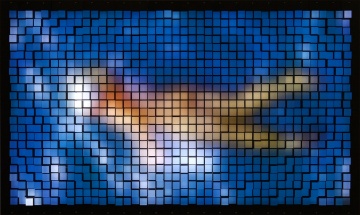
Jim Campbell
Closer to Nothing
December 14, 2019 - January 25, 2020
With light as his primary medium, Jim Campbell probes the liminal boundaries of perception. Utilizing devices and techniques he has developed over the last nineteen years, his newest body of work exploits extreme data deficiency as a means of engaging primal pathways of comprehension. Each piece, effectively incomplete without viewer participation, resolves itself only through the brain’s capacity to extrapolate meaning from a paucity of information.
Jutta Haeckel
Double Nature
October 19, 2019 - November 27, 2019
Düsseldorf-based Jutta Haeckel may be the most original painter of her generation. Her recent paintings on jute—the strong, coarse, natural fiber that burlap is made of—utilize a series of unorthodox techniques to undermine the physical and conceptual precepts of painting.
For several years, Haeckel has been developing a technique that inverts traditional processes of depiction. Rather than painting a form, she paints the negative space around the form, confounding one’s perception of foreground and background as well as the meaning of “subject.” In her newest work, in addition to her already eccentric process, she applies pigments to the “backside” of the painting, then pushes paint through small gaps in the fabric—extruding it onto the “front”—further subverting the two-dimensional space of traditional painting.
Technically dichotomous—painted from both sides; seemingly gestural, yet quite controlled; at the same time abstract and representational; micro and macro—Haeckel’s paintings are studies in ambiguity. Their Double Nature, she believes, is a reflection of the technological, scientific, social and cultural fluidity of our time.
Jutta Haeckel was born in Hannover, Germany in 1972. She studied at Hochschule für Künste, Bremen, under the tutelage of Karin Kneffel and at Goldsmiths College in London. She has exhibited widely in Germany, including recent exhibitions at the Kunstverein Leverkusen, the Kunsthalle in Recklinghausen and at Schloss Detmold. This is her sixth solo exhibition at Hosfelt Gallery. A recent catalogue can be purchased by contacting the gallery.
As a counterpoint to Haeckel’s paintings, Hosfelt Gallery will exhibit a group of antique stone objects from the temple gardens of Kyoto. While Haeckel’s paintings can be said to be about flux, the basins, pagodas, lanterns and foundation stones—some dating as early as the Kamakura Period (1185 – 1300)—exude serenity and solidity. These stone objects are shown in association with Mitsui Fine Arts.
Rina Banerjee
Blemish
September 7, 2019 - October 12, 2019

Rina Banerjee
New Paintings on Paper
September 3, 2019 - October 12, 2019
Hosfelt Gallery presents a solo show of new mixed media paintings on paper by Kolkata-born, New York-based Rina Banerjee, as an ancillary exhibition to her touring mid-career survey, currently on view at the San Jose Museum of Art.
Banerjee’s sensuous and otherworldly paintings reflect both her transnational background and her mastery of materials and image-making to examine and describe the complexities of 21st century globalism.
Delicately rendered in inks, metallic leaf and collaged elements, female figures float in worlds both fluid and ambiguous. They’re dislocated, detached and in states of transformation — sometimes shifting between human and bird or beast. She spins narratives relating to colonialism, environmentalism, immigration and identity, poetically tackling the big issues from the perspective of a woman of color.
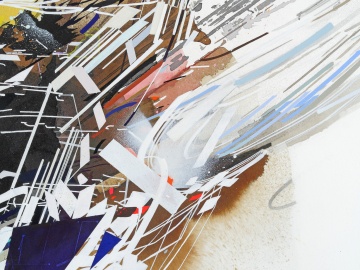
Reed Danziger
To Sweep the Horizon
September 3, 2019 - October 12, 2019
Reed Danziger thinks of herself as a researcher, documenting the scene of a disruption in an imagined time and space. Her artworks take the form of large-scale paintings on paper, in which she develops a vocabulary of mark making using watercolor, ink and graphite to record moments of flux.
In some of these paintings, she captures explosive instants frozen in time. In others, she represents continuously flowing energy. The resulting “imagery” is both fast and slow, filled with flashes of momentum and moments of calm, and reveals evolutionary layers of process that speak to the relationship between the fluid and the fixed.
Though completely abstract, the paintings are metaphors for transition, be it scientific, cultural or personal. In each piece she uses the representation of something unseen – energy – as a symbol for the human effort to understand and cope with things that are ultimately unknowable and outside our control.
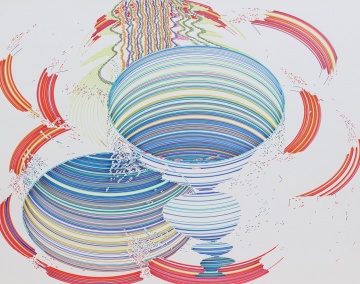
Ruth Asawa, Antonio Asis, Chris Ballantyne, Rina Banerjee, Robert Bechtle, Judith Belzer, Dike Blair, Michael Buthe, Alessandro Casolini, Tyrell Collins, Bruce Conner, Russell Crotty, Reed Danziger, Hugo de Marziani, Jay DeFeo, Jonathan Delafield Cook, Gustavo Díaz, Fortunato Duranti, Jacob El Hanani, Nicole Phungrasamee Fein, León Ferarri, Roland Flexner, Gajin Fugita, Alberto Giacometti, Max Gimblett, Nancy Graves, Zarina Hashmi, Tim Hawkinson, Eva Hesse, Kein Imao, Chusei Inagaki, Colter Jacobsen, Jacob Jordaens, Nam June Paik, Anish Kapoor, Yokoi Kinkoku, Isabella Kirkland, David Klamen, Stefan Kürten, Crystal Liu, Antonio Lizárraga, Jose Antonio Suarez Londono, Emil Lukas, Claire Lukas, Marco Maggi, Gerhard Mayer, Tyeb Mehta, Alicia Mihai Gazcue, Nasreen Mohamedi, Rosetsu Nagasawa, John O’Reilly, Mariyama Okyo, Gabriel Orozco, Driss Ouadahi, Giovanni Battista Paggi, Raymond Pettibon, Patricia Piccinini, Yulia Pinkusevich, Liliana Porter, Ken Price, Angelina Pwerle, Lordy Rodriguez, Ed Ruscha, Fred Sandback, Andrew Schoultz, Shahzia Sikander, William T. Wiley, Mark Tansey, Paul Thek, Ana Tiscornia, Howei Tsui, Ignacio Uriate, Cornelius Völker, Hannah Wilke, William Wood
Between Them: An Installation Composed of Drawings
July 13, 2019 - August 17, 2019
Todd Hosfelt puts together approximately 200 drawings, ranging from abstraction to figuration and utilizing juxtapositions between works to tease out formal and thematic echoes across centuries and cultures. The exhibition includes work by 75 artists ranging from the 1500s to the present.
An opening reception will be held Saturday, July 13 from 4 - 6 PM.

Bernard Lokai
Bernard Lokai: New Paintings
May 11, 2019 - July 3, 2019
Opening reception for the artist: Saturday, May 11 from 3 – 5 PM
In two distinct bodies of work, German painter Bernard Lokai explores the seemingly infinite possibilities of paint applied to canvas.
The first body of work, which he calls Landscape Blocks, is comprised of grids of 12 x 16 inch panels in which he both refers to and disrupts the history of painting. Each panel is a stand-alone abstract work. Some of them clearly allude to recognizable conventions, techniques or even specific artists, while others undermine those connections and still others have no recognizable precedent. He then arranges (and sometimes spends years rearranging) them into grids of 18 to 33 components, which together form the impression of a landscape. The tension between abstraction and representation operates as a metaphor for philosophical examinations of appearance and disappearance, permanence and impermanence, creation and destruction.
Individual large canvases form the second body of work. These make room for bold expressions of color and mark-making and often combine multiple painting techniques within a single work. From sprayed neon acrylics to thickly applied, gestural brushstrokes in oil, Lokai’s purpose is neither to express emotion nor reference a particular subject. Rather, his practice ceaselessly probes the traditions and tropes of painting in unbounded pursuit of latent meanings and potential.
Bernard Lokai was born in 1960 in Bohumín, Czechoslovakia. After his parents escaped from the former Czechoslovakia, Lokai grew up in Düren, Germany. He studied at the Kunstakademie Düsseldorf under Gerhard Richter and now resides in Düsseldorf.
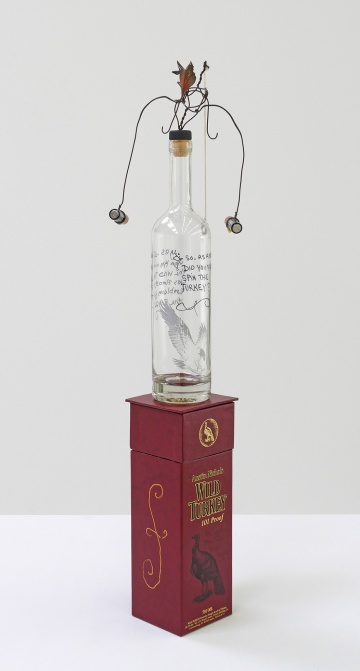
William T. Wiley
SCULPTURE, EYES WEAR TUG ODD
March 23, 2019 - May 4, 2019
William T. Wiley is one of the most influential American artists to come out of the San Francisco Bay Area. His third solo exhibition at Hosfelt Gallery reflects the importance of what is perhaps the least known aspect of his output—sculpture—through a range of works spanning the last six decades.
Defined and unified by a visual vocabulary of repeating motifs combined with cunning word play, Wiley’s is an open-ended investigation into the moral issues of the global citizen. He masterfully assembles found objects and common materials upon which he inscribes enigmatic malapropisms, puns and double entendre, crafting strange objects with uncanny psychological weight.
But the “gee-shucksness” of the media and frontier-plainness of the poetry are the spoons-full-of-sugar employed by a philosopher/poet of the most sophisticated order. Wiley’s riddle-filled assemblages, like his paintings on canvas and paper, are the empathetic musings of one particularly tuned into the absurdity of the human condition.
William T. Wiley was born in 1937 and moved to San Francisco in 1956 to attend the San Francisco Art Institute (then the California School of Fine Arts). He completed his MFA in 1962, then taught at UC Davis, where he, along with Wayne Thiebaud, Robert Arneson, Roy De Forest, and Manuel Neri, transformed what was known as an agricultural college into one of the most important art schools of the 1960s and 1970s. In 2009 the Smithsonian American Art Museum mounted a retrospective of Wiley’s work that traveled to the Berkeley Art Museum in 2010. In 2013 Wiley was the subject of a major solo exhibition at the Fondazione Marconi in Milan. During the 2013 Venice Biennale, Wiley’s work was included in the Prada Foundation’s remake of the legendary exhibition, When Attitude Becomes Form, originally curated by Harald Szeemann at the Bern Kunsthalle, Switzerland in 1969. Wiley’s paintings, works on paper, sculptures and films are in the permanent collections of prominent public and private collections worldwide.

Russell Crotty
Bordering the Habitable Zone
February 2, 2019 - March 16, 2019
Internationally recognized for his innovative drawing practice, Russell Crotty presents a new body of work that combines his fascination with space exploration and concerns about environmental degradation from the viewpoint of an accomplished amateur astronomer, passionate surfer and native Californian.
The central motif of this exhibition is imagined planetary landers—representing the thrill and promise of exploration as well as the perils our world faces. Informed by his own observational experience and that of scientists who surmise worlds that might exist beyond our own, his robotic explorers navigate hostile, submarine-like environments awash in toxic Kool-Aid-colored atmospheres. But their whimsical, futuristic architecture also recalls the optimism of mid-century California design, the Googie architecture of John Lautner, Oscar Niemeyer and Eero Saarinen, and Hanna Barbera’s influential animation, The Jetsons.
Like the fastidiously inked globes for which he became famous, Crotty’s new work is equally object and drawing. Meticulous depictions of rockets, celestial bodies, smoke stacks and planetary landscapes are collaged to build the structure of the rovers, which are then embedded in bio-resin—a technique similar to that used in finishing surfboards. Despite this reference to “finish fetish,” he incorporates enough chance in these works to suggest the unintended consequences of humanity’s (mis)use of our planet and the unknowable results of exploration.
Russell Crotty (b. 1956) was born and raised in the San Francisco Bay area. He lived and worked between Southern and Northern California for many years and now resides in the Ojai Valley. He received his BFA from the San Francisco Art Institute and his MFA from the University of California, Irvine. His work has been exhibited extensively internationally and collected by The Museum of Modern Art and the Whitney Museum of American Art in New York, the Los Angeles County Museum of Art, SFMoMA, the San Francisco Fine Arts Museums, the Centre Pompidou in Paris and many others. A two-year residency in 2016/2017 at Lick’s Mount Hamilton Observatory, a research facility managed by the University of California Santa Cruz, culminated in a solo exhibition at the San Jose Institute of Contemporary Art entitled “Looking Back in Time: Russell Crotty and Lick Observatory.”

Michael Light
Great Basin Autoglyphs and Pleistoseas
February 2, 2019 - March 16, 2019
In his eighth solo exhibition at Hosfelt Gallery, Michael Light presents a new body of work from his ongoing aerial photographic survey of the arid American West. Great Basin Autoglyphs and Pleistoseas ventures into deep time, moving from habited, placed settlements into pure space and its attendant emptiness. The resulting images are abstract and painterly investigations that reveal hitherto unseen terrain imprinted by both human intervention and geological phenomena.
Twelve thousand years ago the Great Basin—that part of the country between California and Utah where water does not drain to the ocean—was 900 feet underwater, covered by two vast and now largely evaporated historical lakes, Bonneville and Lahontan. The remnants of Lake Bonneville today are the Great Salt Lake in Utah and its eponymous salt flats, while the most famous portion of the former Lake Lahontan is the Black Rock Desert in Nevada, an alkali bed that floods and dries each year, creating the flattest land on earth. It is also the location of the annual arts festival Burning Man.
The topographies now exposed by both Pleistocene lakes are the entry points for Light as he continues to pursue themes of mapping, perceptual orientation, geology, and human impact on the land, but here in a more minimal and psychological way. Piloting his 600-pound aircraft at low elevations, he uses a large-format digital camera to capture the vast flatness of the former lakebeds, while back in the studio he applies a hyper-intensification process not unlike X-ray imaging or gravestone rubbing that results in the revelation of impressions, spaces and textures that are indiscernible to the naked eye. While Light has always pushed the boundaries of landscape photography, his approach with this body of work takes a deeper turn into graphic and emotional abstraction.
Michael Light (b. 1963) is a Bay Area photographer, bookmaker, and pilot whose focus is the environment and how contemporary American culture relates to it. Light has exhibited globally and his work is in numerous museum collections including the San Francisco Museum of Modern Art, Fine Arts Museums of San Francisco, San Jose Museum of Art, Los Angeles County Museum of Art, Getty Research Institute, Los Angeles, Nevada Museum of Art, Reno, Brooklyn Art Museum, and the Victoria & Albert, London. His series FULL MOON is permanently displayed at the American Museum of Natural History in New York.

Patricia Piccinini
Inter-natural
December 1, 2018 - January 26, 2019
In her second solo exhibition at Hosfelt Gallery, Patricia Piccinini presents an immersive installation of hyper-realistic sculptures probing the increasingly permeable boundaries of humanness.
Cornelius Völker
October 13, 2018 - November 21, 2018
Marco Maggi
SUPRA muro
September 8, 2018 - September 6, 2018

Janine Antoni, Rina Banerjee, Louise Bourgeois, Julian Charrière, Edmund Clark, Bruce Conner, Russell Crotty, Tim Hawkinson, Isabella Kirkland, Barbara Kruger, Michael Light, John O’Reilly, Patricia Piccinini, Alan Rath, Kiki Smith, Surabhi Saraf and Cornelius Völker
Frankenstein’s Birthday Party
June 23, 2018 - August 11, 2018
2018 is the bicentennial of Mary Wollstonecraft Shelley’s novel, Frankenstein; or, The Modern Prometheus. Why does a 200-year-old ghost story continue to feel so relevant? It’s important to remember that the Frankenstein of Hollywood and pop culture – Boris Karloff, The Munsters or Rocky Horror Picture Show – is quite different from the novel. Beyond the fact that the tale has captured popular imagination, the novel’s lasting impact is grounded in the fact that it is a parable about human nature. And the most important question it asks is who is the real monster?
The exhibition begins, as it must, with contemporary artists looking at the body and our attempts to conquer death; advances in science and technology; the animation of objects or machines and artificial intelligence. Thence comes an examination of ambition that outstrips the ability to understand or control what we’ve created and finally, what happens when we don’t take responsibility for the consequences of our actions.
Central to both the novel and the curatorial stance of this exhibition is the failure to feel empathy for the ostensibly unlovable — the other. Who is to blame for the rage born of feelings of rejection and how do we expect that anger to play out in society?

Emil Lukas
Twin Orbit
May 5, 2018 - June 16, 2018
Emil Lukas’ exquisitely strange and phenomenological objects are meditations on the way we perceive the world. “We’re affected by lots of things that are larger than us — things we don’t normally know how to see — for example the laws of physics,” says Lukas. “I’m attempting to make the invisible, visible.”
Labor-intensive and experimental, playful and poetic, surprising and delightful, Lukas’ sculptures and sculptural paintings grow out of investigations into gravity, perspective, mathematics, color theory and the properties of light.
Round “paintings” — actually parabolic bowls with tens of thousands of colored threads stretched across — manipulate our sense of space and definition of color. Chunky, plaster works composed of honeycombs of multi-colored pixels create optically vibrating fields, their convex surfaces disrupting our perception of depth. And the centerpiece of the exhibition, a monumental, pixilated, aluminum lens, both restricts and restructures our line of sight.
This exhibition is an examination of seeing, where optics — the study of sight and the behavior of light — is a metaphor for the human ability to derive insight from abstract concepts. “We have two eyes and they are set into our heads in a way that determines our reality — our perspective. Those notions of the way the world exists are what I’m trying to upend.”
Emil Lukas was born in Pittsburgh, PA. He has exhibited extensively internationally and has been collected by, among many others, the San Francisco Museum of Modern Art and the Anderson Collection. Lukas has been represented by Hosfelt Gallery since 2006. This is our sixth solo exhibition together.

Anoka Faruqee
structural color
March 17, 2018 - April 28, 2018
In Anoka Faruqee’s sixth exhibition at Hosfelt Gallery, she collaborates with her partner David Driscoll to present new paintings from their Circle series. These works exploit the optical complexity of interference created through the layering of misaligned patterns — turning what is considered a corruption in digital imagery into a source of prismatic luminosity and uncanny volumetric effects.
Developing out of Faruqee’s earlier Moiré series, these new paintings adhere to the consistent structural format of concentric circles. Created with notched tools raked through wet paint, their digital/mechanical appearance belies the rigorous hand-made process, but human gesture and imperfection are apparent through interruption, errata, and the thick flows of paint dripping around the edges. The ultimate chromatic and spectral effects are unpredictable and only fully reveal themselves once each work is complete. The fusion of patterns and colors creates an ephemeral condition in which the vibrations of light and hue continually change with the movement of the viewer.
Moirés have a stubborn logic that parallels various phenomena in the physical world, such as wave formations, stress patterns, and magnetic fields. The overlay and subsequent visual fusion of two or more offset patterns creates another pattern that is quite unlike and much more complex than any of the components. In this group of works, this phenomenon of interference not only exemplifies the plasticity of perception, but also models the dynamism of the physical world.
Anoka Faruqee was born in Ann Arbor, Michigan and directs graduate studies in painting and printmaking at Yale School of Art. David Driscoll was born in Wintersville, Ohio. They live and work in New Haven, CT.
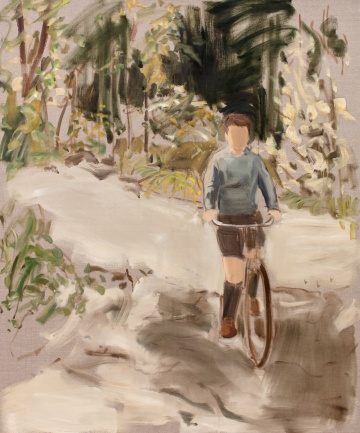
Gideon Rubin
The Kaiser’s Daughter
March 17, 2018 - April 28, 2018
Most of the paintings in Gideon Rubin’s sixth solo exhibition with Hosfelt Gallery were selected from work made for an exhibition at the Freud Museum in London. As source material, Rubin — an Israeli living in London whose work always refers to found images — mined photographs illustrating a serialized English-language edition of Mein Kampf that was published in 1939, the same year that Rubin’s grandparents, like Sigmund Freud, fled Europe to escape Nazi persecution.
Rubin’s characteristic manner of painting – with his subjects reduced to a few adept brushstrokes in a minimal color palette — renders his imagery simultaneously straightforward and ambiguous. They read like a flash of memory at the point of fading completely, a dream, or a history known only through re-telling.
Other paintings in this exhibition refer to Andrei Tarkovsky’s 1975 experimental film, The Mirror, a non-linear, autobiographical masterpiece known for the poetry of its cinematography. Central to the work of the three — Freud, Tarkovsky and Rubin — is the slipperiness of human memory and the importance of seeking clues in the past to decipher and resolve the issues of the present.
Gideon Rubin was born in Tel Aviv, Israel, and lives in London. He received his MFA from Slade School of Fine Art, University College, London. His work has been exhibited extensively internationally.

 Back to all Member Galleries
Back to all Member Galleries


